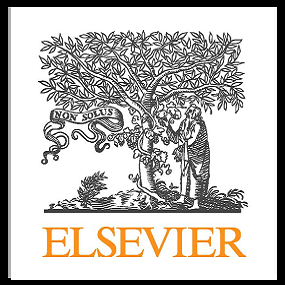دانلود رایگان مقاله بررسی استفاده از مسئولیت اجتماعی شرکتی در تاب آوری بلایای ساختمان از طریق توسه پایدار در کشور هند – سال 2020


مشخصات مقاله:
عنوان فارسی مقاله:
بررسی استفاده از مسئولیت اجتماعی شرکتی در تاب آوری بلایای ساختمان از طریق توسه پایدار در کشور هند: یک رویکرد مدلسازی ساختاری تفسیری
عنوان انگلیسی مقاله:
Exploring the use of corporate social responsibility in building disaster resilience through sustainable development in India: An interpretive structural modelling approach
کلمات کلیدی مقاله:
مسئولیت اجتماعی شرکت، مدل سازی ساختاری تفسیری، انعطاف پذیری در برابر بلایا و کاهش خطر
مناسب برای رشته های دانشگاهی زیر:
مدیریت، معماری
مناسب برای گرایش های دانشگاهی زیر:
مدیریت پروژه، معماری پایدار
وضعیت مقاله انگلیسی و ترجمه:
مقاله انگلیسی را میتوانید به صورت رایگان با فرمت PDF با کلیک بر روی دکمه آبی، دانلود نمایید. برای ثبت سفارش ترجمه نیز روی دکلمه قرمز رنگ کلیک نمایید. سفارش ترجمه نیازمند زمان بوده و ترجمه این مقاله آماده نمیباشد و پس از اتمام ترجمه، فایل ورد تایپ شده قابل دانلود خواهد بود.
فهرست مطالب:
Abstract
Keywords
1. Introduction
1.1. Introduction
1.2. Rationale and objectives of the study
2. Literature review and enabler identification
2.1. Awareness (E1)
2.1.1. Source
2.1.2. Understanding
2.1.3. Interpretation
2.2. Proactive attitude (E2)
2.2.1. Source
2.2.2. Understanding
2.2.3. Interpretation
2.3. Location and nature of the company (E3)
2.3.1. Source
2.3.2. Understanding
2.3.3. Interpretation
2.4. Brand and reputation (E4)
2.4.1. Source
2.4.2. Understanding
2.4.3. Interpretation
2.5. Business opportunities in social investments (E5)
2.5.1. Source
2.5.2. Understanding
2.5.3. Source
2.5.4. Interpretation
2.6. National regulations and international compliances (E6)
2.6.1. Source
2.6.2. Understanding
2.6.3. Interpretation
2.7. Awards, recognition and incentives (E7)
2.7.1. Source
2.7.2. Understanding
2.7.3. Interpretation
2.8. Legislation (E8)
2.8.1. Source
2.8.2. Understanding
2.8.3. Interpretation
2.9. Ease of doing CSR (E9)
2.9.1. Source
2.9.2. Understanding
2.9.3. Interpretation
2.10. Vision (E10)
2.10.1. Source
2.10.2. Understanding
2.10.3. Interpretation
2.11. Religion and culture (E11)
2.11.1. Source
2.11.2. Understanding
2.11.3. Interpretation
2.12. Political influence (E12)
2.12.1. Source
2.12.2. Understanding
2.12.3. Interpretation
3. Methodology
3.1. Validation of enablers
3.2. Analysis
3.2.1. Step 1: formation of Structural Self-Interaction Matrix (SSIM)
3.2.2. Step 2: Initial Reachability Matrix (IRM)
3.2.3. Step 3: partitioning the enablers at appropriate levels using iteration
3.2.4. Step 4: constructing digraph or driving power-dependence diagram
3.2.5. Step 5:
4. Results
4.1. MICMAC analysis
4.2. Discussion
4.3. Research implications
5. Conclusion and future scope of work
5.1. Conclusion
5.2. Future scope of work
Declaration of competing interest
References
قسمتی از مقاله انگلیسی:
ABSTRACT
The indomitable spirit of growth of mankind has led to rapid urbanisation, steered by industries and corporates. While globalisation and development mark the good face of the consequential coin, increased frequency of extreme events and disaster risks along with the phenomenon of climate change, marks the dark face of the same coin. Each time the society takes a catastrophic hit, humanity begs to question the role of corporates in disaster mitigation, management and rehabilitation. The most popular way of engagement for the corporates in such a time of dire need is through providing relief and support, be it in cash, kind, man-power etc. The idea of this study evolves from this very trend which appears to be embedded in the socio-political fibre of our society, especially India. The Companies Act, 2013 of India has steered India into becoming one of the few countries with a mandatory CSR regime. The avenues of expenditure, as mandated by the government, effectively circumscribes the objectives of sustainable development. This study finds its genesis in the logical question that follows this premise; since expenditure through CSR is already mandatory in India and is directed towards sustainable development, why not channel such investments in such a manner that disaster resilience and climate change adaptation becomes inclusive of the final objective of sustainable development? However, the socio-political ecosystem is not conducive to enforce such a paradigm shift; from CSR expenditures in relief and rehabilitation to disaster resilience oriented sustainable development. Hence, the purpose of this study is to identify those crucial elements of our society and their inter-dependencies which when ideally tweaked and nurtured will lead to a social setup where CSR investments would lead to sustainable development inclusive of disaster resilience. Extensive literature review was done to identify elements or enablers, which are critical in bringing about a change in the present socio-political texture of CSR investment and engagement. Questionnaire survey and interviews were used as a tool to judge and evaluate these enablers. Discussions and debates leading to feedbacks and inputs from twenty experts from the relevant field and academicians were used for further refinement of the enablers and then the enablers were subjected to Interpretive Structural Modelling (ISM) which brought out the contextual relationships among the enablers. The resultant model is illustrated in the form of a hierarchical structure of enablers revealing their inter-dependencies and relations with each-other. This would help policymakers, corporates and other stakeholders to understand and know those, already existing, societal elements which when tapped upon would not only benefit them but also help in building a disaster resilient society.


